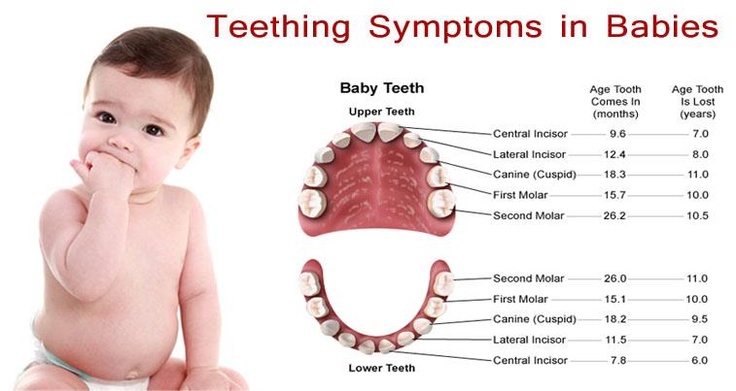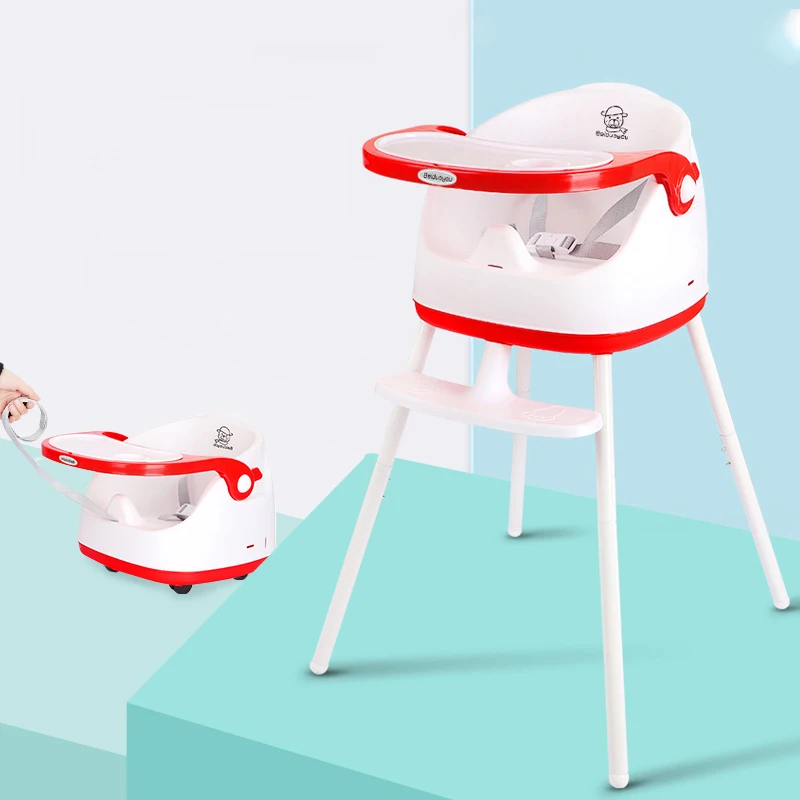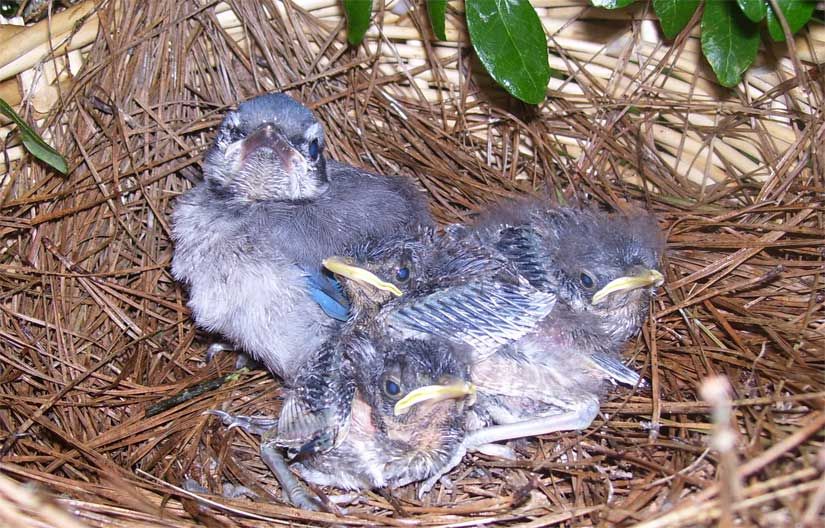Baby led weaning or spoon feeding
Baby-led weaning: pros and cons | Baby & toddler, Feeding articles & support
You might have heard of it but are not sure how to do it. We look at the pros and cons of baby-led weaning, and how you can start your baby on their first foods.
What is baby-led weaning?
Baby-led weaning is all about offering your baby a selection of foods to choose from and letting them feed themselves. Introducing your little one to solids through baby-led weaning allows them to be in charge, explore, and choose what they pick up and eat. This means they’re more likely to develop the skills needed to take food into their mouth, move it around and swallow safely.
So far so simple, but here we explain what else you might want to know before deciding to introduce solids in this way.
When can I start baby-led weaning?
The recommended age to start baby-led weaning is from six months onwards (NHS, 2019). This is the same age as the alternative – spoon-feeding (NHS, 2019).
How do I start baby-led weaning?
To try baby-led weaning, your baby will need to be able to grasp whole pieces of food and bring them to their mouth. Babies usually develop this skill at around six months old (Naylor and Morrow, 2001; Wright et al, 2011).
First, you need to sit your baby upright facing the table, either on your lap or in a highchair. Make sure they are steady and can use their hands and arms freely (Rapley and Murkett, 2010).
You can start by offering your baby soft sticks and chunks of food, rather than feeding it to them (Public Health England, no date; First Steps Nutrition Trust, 2020). Try offering them things like:
- cooked vegetables
- fruit
- pasta
- soft foods like banana or avocado.
See our other article for more baby-led weaning how-to tips.
What are the benefits of baby-led weaning?
- Your little one has the chance to choose, pick up and explore food themselves, helping them to gain independence.
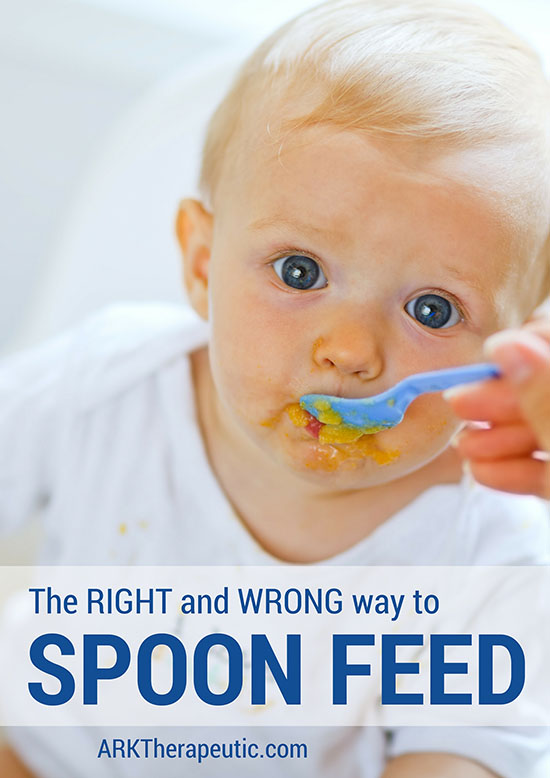
- They get used to different food textures from the beginning.
- Your baby can be offered food that the whole family is eating, with little need for further preparation.
- Parents often say that babies who choose what to feed themselves have wider food tastes. The evidence is mixed about whether baby-led weaning could stop babies from becoming fussy eaters (Boswell, 2021).
- Some research suggests babies who feed themselves are more likely to control their appetite, perhaps reducing their risk of being overweight later in life. Other research suggests that’s not the case, so we don’t yet know for sure. (Townsend and Pitchford, 2012, Brown and Lee 2015; Rapley, 2015; Brown et al, 2017; Lakshman et al, 2017; Boswell, 2021)
What are the negatives of baby-led weaning?
- Some parents worry that baby-led weaning is more likely to cause their baby to choke than spoon-feeding. Emerging evidence suggests that baby-led weaning may result in more gagging as babies get used to swallowing but no increased likelihood of choking (Brown, 2018).

- Baby-led weaning can be messier than spoon-feeding. But whether you’re spoon-feeding or baby-led weaning, you’re bound to have some mess at this age.
- One concern is whether baby led-weaning provides a varied and nutritious enough diet. However, numerous studies have now shown that babies take in enough energy with a baby-led weaning approach (Cameron et al, 2015; Taylor et al, 2017; Morison et al, 2018). And at this stage, milk feeds are still your baby's main source of nutrients and first foods are a way of exploring tastes and textures.
Baby-led weaning and choking
There is no evidence to suggest babies are more likely to choke with baby-led weaning, compared to spoon-feeding (Boswell, 2021). The NHS says there is no more risk of choking when a baby feeds themselves than when they are fed with a spoon (NHS, 2019).
All babies have a strong gag reflex, and there's a clear difference between gagging and choking. When your baby gags, their eyes may water, they might cough, retch or make a noise in their throat and go red in the face. But if they are choking, their face will go pale or bluish and they will be silent.
But if they are choking, their face will go pale or bluish and they will be silent.
Make sure you know what to do if your baby is choking. Some parents find it helpful to attend an NCT baby first aid course to help build up their confidence.
This page was last reviewed in February 2022
Further information
Our support line offers practical and emotional support with feeding your baby and general enquiries for parents, members and volunteers: 0300 330 0700.
You might find attending one of our Early Days groups helpful as they give you the opportunity to explore different approaches to important parenting issues with a qualified group leader and other new parents in your area.
Make friends with other parents-to-be and new parents in your local area for support and friendship by seeing what NCT activities are happening nearby.
References
Boswell N. (2021) Complementary feeding methods - a review of the benefits and risks. Int J Environ Res Public Health. 18(13):7165. Available at: https://doi.org/10.3390/ijerph28137165
(2021) Complementary feeding methods - a review of the benefits and risks. Int J Environ Res Public Health. 18(13):7165. Available at: https://doi.org/10.3390/ijerph28137165
Brown A. (2018) No difference in self-reported frequency of choking between infants introduced to solid foods using a baby-led weaning or traditional spoon-feeding approach. J Hum Nutr Diet. 31(4):496-504. Available at: https://doi.org/10.1111/jhn.12528
Brown A, Lee MD. (2015) Early influences on child satiety-responsiveness: the role of weaning style. Pediatr Obes. 10(1):57-66. Available at: https://doi.org/10.1111/j.2047-6310.2013.00207.x
Brown A, Wyn Jones S, Rowan H. (2017) Baby led weaning: The evidence to date. Curr Nutr Rep. 6:148-156. Available at: https://doi.org/10.1007/s13668-017-0201-2
Cameron SL, Taylor RW, Heath ALM. (2015) Development and pilot testing of Baby-Led Introduction to Solid-a version of Baby-Led Weaning modified to address concerns about iron deficiency, growth faltering and choking. BMC Pediatr. 15:99. Available at: https://doi.org/10.1186/s12887-015-0422-8
BMC Pediatr. 15:99. Available at: https://doi.org/10.1186/s12887-015-0422-8
First Steps Nutrition Trust. (2020) Eating well: the first year. A guide to introducing solids and eating well up to baby’s first birthday. Available at: https://www.firststepsnutrition.org/eating-well-infants-new-mums [Accessed 10th February 2022]
Lakshman R, Clifton EA, Ong KK. (2017) Baby-led weaning - safe and effective but not preventive of obesity. JAMA Pediatr. 171(9):832-833. Available at: https://doi.org/10.1001/jamapediatrics.2017.1766
Morison BJ, Heath A-LM, Haszard JJ, Hein K, Fleming EA, Daniels L, et al. (2018) Impact of a modified version of baby-led weaning on dietary variety and food preferences in infants. Nutrients. 10(8):1092. Available at: https://doi.org/10.3390/nu10081092
Naylor A, Morrow A. (2001) Developmental Readiness of Normal Full Term Infants to Progress from Exclusive Breastfeeding to the Introduction of Complementary Foods. Academy for Educational Development. Available at: https://pdf.usaid.gov/pdf_docs/Pnacs461.pdf [Accessed 10th February 2022]
Available at: https://pdf.usaid.gov/pdf_docs/Pnacs461.pdf [Accessed 10th February 2022]
NHS. (2019) Your baby's first solid foods. Available at: https://www.nhs.uk/conditions/baby/weaning-and-feeding/babys-first-soli… [Accessed 10th February 2022]
Public Health England. (no date) What to feed your baby. Available at: https://www.nhs.uk/start4life/weaning/what-to-feed-your-baby/around-6-m… [Accessed 10th February 2022]
Rapley G. (2015) Baby-led weaning: the theory and evidence behind the approach. J Health Visiting. 3(3):144-151. Available at: https://www.researchgate.net/publication/276905087 [Accessed 10th February 2022]
Rapley G, Murkett T. (2010) Baby-Led Weaning: The Essential Guide to Introducing Solid Foods and Helping Your Baby to Grow Up a Happy and Confident Eater. Experiment LLC, London.
Taylor RW, Williams SM, Fangupo LJ, Wheeler BJ, Taylor BJ, Daniels L, et al. (2017) Effect of a baby-led approach to complementary feeding on infant growth and overweight: a randomized clinical trial. JAMA Pediatr. Available at: https://doi.org/10.1001/jamapediatrics.2017.1284
JAMA Pediatr. Available at: https://doi.org/10.1001/jamapediatrics.2017.1284
Townsend E, Pitchford NJ. (2012) Baby knows best? The impact of weaning style on food preferences and body mass index in early childhood in a case-controlled sample. BMJ Open. 2(1):e000298. Available at: http://dx.doi.org/10.1136/bmjopen-2011-000298
Wright CM, Cameron K, Tsiaka M, Parkinson KN. (2011) Is baby-led weaning feasible? When do babies first reach out for and eat fingers foods? Matern Child Nutr. 7(1):27-33. Available at: https://doi.org/10.1111/j.1740-8709.2010.00274.x
Information you can trust from NCT
When it comes to content, our aim is simple: every parent should have access to information they can trust.
All of our articles have been thoroughly researched and are based on the latest evidence from reputable and robust sources. We create our articles with NCT antenatal teachers, postnatal leaders and breastfeeding counsellors, as well as academics and representatives from relevant organisations and charities.
Read more about our editorial review process.
Baby-led Weaning vs Spoon Feeding: Different Ways to Introduce Solids
Home / Food Allergy Blog
Previous / Next
There are many different ways to introduce solids to your baby - from spoon-feeding purees to letting your little one intuitively reach for finger foods and put them in their mouth.
The two most popular methods of introducing solids are baby-led weaning and spoon-feeding. Each method has its pros and cons, and you should do the method you feel most comfortable and confident with. Here are some of the biggest things to consider when deciding what method is best for you and your baby.
What is baby-led weaning?Finger food first, also known as baby-led weaning, is a way to introduce solids to your little one that relies on their natural instinct to bring food to their mouths.
Skipping purées and spoon feeding entirely, babies are encouraged to feed themselves independently, choosing different tastes and textures at will. Babies have a number of built in reflexes to manage finger food as early as 6 months of age. These reflexes help them bite, chew, swallow and even push food forward and out of the mouth.
Babies have a number of built in reflexes to manage finger food as early as 6 months of age. These reflexes help them bite, chew, swallow and even push food forward and out of the mouth.
The best foods for baby-led weaning are finger-thick, soft, and easily squishable between your fingers. Some examples of finger-thick foods include banana, sweet potato fries or wedges, green beans, mango slices and avocado. Try to avoid slippery foods that are hard to hold, or choking hazards like raw apple or whole nuts. To avoid any hazards for your child, slice up foods into small easily manageable pieces, or steam fruits and vegetables until they are soft - just be sure that they are cooled before serving!
Allowing your baby to make all food choices for him or herself, parent’s should still be nearby to monitor and help guide their baby through the weaning process. It is important to let your child handle the food themselves, and not to push food into their mouth.
By exploring baby-led weaning, you are allowing your little one to try a wide variety of tastes and textures, set their own feeding pace, establish a healthy relationship with food, and enhance oral and motor skills.
- Improved oral and motor skills
- Encourages an adventurous palette with different textures
- Easy to enjoy family meals together
- Less work to mash and puree foods
- Creates a responsive feeding environment
Spoon-feeding has traditionally been the prevalent way to introduce solids to babies. With this type of feeding technique, you start with smooth mashes or purées, and progress to thicker and lumpier textures over time.
Due to the puréed nature, these foods need to be spoon-fed by a caretaker, but as you progress to thicker textures, you can hand your child the spoon and they can practice self-feeding.
It's best to offer your baby a variety of foods, like fruits, vegetables, grains, and meats in this feeding format so they get a variety of tastes, textures, and nutrients from the start. Shallow or flat spoons are best while spoon-feeding to prevent scraping the spoon on the roof of their mouth.
With spoon-feeding, it is important to progress to appropriate textures to help develop the oral and motor skills they need. Staying on thin, watery purees for too long can make transition to thicker, lumpier foods harder.
Benefits of spoon-feeding- Fewer choking hazards
- More control in the nutrient intake as less food ends up on the ground
- Saves time to serve pre-made purees
- Improved motor and oral skills
- Encourages healthy mealtime habits with the family
There is no one best way to feed your baby. Recent studies found that there was no significant difference in nutrient intake between baby led weaning and traditional feeding, as long as parents were providing appropriate foods. Whatever feeding method makes you comfortable, confident, and is the best fit for your family will be perfect for you and your little one.
In fact, you can offer your baby a combination of mashed foods and finger foods starting at 4-6 months. As you introduce solids, you may find that your baby will prefer one way of feeding over the other, but they can still learn both skills at the same time. Just remember that introduction of food is complementary to breastmilk and/or formula feeding, which should remain the primary source of nutrients and calories up through the first year.
As you introduce solids, you may find that your baby will prefer one way of feeding over the other, but they can still learn both skills at the same time. Just remember that introduction of food is complementary to breastmilk and/or formula feeding, which should remain the primary source of nutrients and calories up through the first year.
Termination of breastfeeding | Stopping breastfeeding
When is it time to stop breastfeeding and what is the best way to do it? Read our article for useful practical tips on weaning.
Share this information
How long should breastfeeding continue? Three months? Six? Year? Or maybe a few years?
The World Health Organization (WHO) and other authorities recommend that infants be exclusively breastfed for the first six months and then continue to be breastfed along with other foods (complementary foods) for at least two years. nine0011 1
The fact is that breast milk is not just food. It is a natural sedative if the child is anxious or tired. In addition, milk contains immune-boosting components, the amount of which increases dramatically when the baby gets sick. 2
It is a natural sedative if the child is anxious or tired. In addition, milk contains immune-boosting components, the amount of which increases dramatically when the baby gets sick. 2
According to anthropologists, the natural age of a person to stop breastfeeding is even more than two years. Given factors such as tooth development, body weight, comparison with other primates, and historical evidence, some scientists believe that breastfeeding may last up to two to four years. A number of researchers even believe that our ancestors breastfed children up to six or seven years of age. nine0011 3
Today, more than 60% of mothers in developed countries start giving their babies formula or complementary foods before six months of age, 4 although WHO does not recommend this.
When is it time to stop breastfeeding?
Weaning means that you gradually stop breastfeeding your baby. Ideally, the first step in this process is the gradual introduction of complementary foods, starting at about six months of age. In this case, breastfeeding continues. The weaning process continues until the mother's milk has been completely replaced by other foods and drinks. nine0003
In this case, breastfeeding continues. The weaning process continues until the mother's milk has been completely replaced by other foods and drinks. nine0003
“After six months, the baby needs higher doses of certain nutrients, such as iron, zinc, vitamins B and D, that he cannot get from breast milk or from his own reserves,” says Sarah Beeson, health visitor from Great Britain.
“But solid food should at first only supplement the main diet with breast milk and gradually replace it. Mother's milk remains the main source of nutrition for the baby for many months to come.” nine0003
On average, a seven-month-old baby gets 93% of its calories from breast milk. And even between the 11th and 16th months, milk provides him with about half of the daily calorie intake. 5
“Sometimes moms think that breastmilk isn't that important once a baby has started solid foods, but the truth is, no matter how many months old a baby is, there's nothing better than your milk,” continues Sarah.
In fact, the process of finishing breastfeeding can take as long as mother and baby want. “When to stop breastfeeding is up to you,” says Sarah. The only thing that matters is what you think is right for you and your child.” nine0003
How to wean
Whenever you decide to start weaning your baby, it's best to do it gradually. An abrupt cessation of breastfeeding can lead to lactostasis, blockage of the milk ducts and mastitis, and in a child such a sudden change can adversely affect the state of the digestive and immune systems. In addition, it will be difficult for both of you psychologically.
When should I stop breastfeeding?
Sometimes mothers mistakenly believe that it is time to stop breastfeeding, when in fact there is no reason to. If you're returning to work, breastfeeding can be a great way to stay close to your baby during this difficult time for both of you. You can express milk at work, and morning and evening feeding sessions will give you the opportunity to spend time alone with your baby. If you need to leave without your baby, you can also express milk and bring or send it home. nine0003
If you need to leave without your baby, you can also express milk and bring or send it home. nine0003
If you get sick, this is not always a reason to stop breastfeeding. Read our advice in the article on breastfeeding when sick and consult with your healthcare professional.
Weaning up to six months
If you cannot continue breastfeeding until six months and want to try weaning your baby, start by replacing one feeding a day with a bottle of formula.
“It's best to start with midday feedings. Babies are very alert and able to smell breast milk nearby, so ask your partner or relative to give your baby a bottle when you're in the other room,” Sarah advises. nine0003
“Be hygienic when preparing food. Be prepared for the fact that the baby will take fewer servings of expressed milk per day than if he was fed directly from the breast. Don't make him eat more milk than he wants."
You will probably feel that your breasts are fuller and more tender. This is due to the fact that your body is rebuilding to produce less milk. If this creates discomfort, try expressing some milk—just enough to relieve the discomfort without stimulating extra production. nine0003
This is due to the fact that your body is rebuilding to produce less milk. If this creates discomfort, try expressing some milk—just enough to relieve the discomfort without stimulating extra production. nine0003
When your body adjusts to the new volume - usually after a few days - replace with formula for one more meal a day. Continue this until you have changed all feedings and your baby is completely weaned.
“I had complications after my first birth, as a result I lost a lot of weight very quickly, and besides, I developed mastitis. Lactation was very weak, and at three months I was forced to stop breastfeeding,” recalls Jennifer, a mother of two from the UK, “I gradually replaced one feeding, so physically it was easy, but mentally it was hard for me.” nine0003
If you want to maintain closeness with your baby and all the health benefits of breastfeeding, but still need to cut down on breastfeeding, try partial weaning, replacing only a few feeds a day with formula.
Weaning after six months
Once your baby starts eating solid foods (about six months old), you will notice that breastfeeding naturally occurs less and less. For a year, it can be reduced to just a couple of times a day, and feedings will be replaced by full meals and healthy snacks. nine0003
Anyway, if you intend to continue to reduce breastfeeding, do it gradually, replacing one feeding at a time. Use formula milk if your baby is under 12 months old. With cow's milk, you should wait at least up to a year.
“When I decided to wean my son, I breastfed him three times a day and gave him other foods three times plus light snacks. Gradually, I replaced all breastfeedings with formula. By 11 months, we only had one nighttime breastfeed left,” says Ruth, a UK mom. nine0003
There are various ways to distract a child from changes in his diet. Some mothers suggest that instead of breastfeeding something to drink and eat together to maintain a sense of closeness. You can also change your daily routine, play your favorite game, or replace feeding with caresses - from you or from your partner. Some children take longer to get used to the new food, but in the end everything falls into place. If you are having difficulty weaning, ask your healthcare provider for advice. nine0003
You can also change your daily routine, play your favorite game, or replace feeding with caresses - from you or from your partner. Some children take longer to get used to the new food, but in the end everything falls into place. If you are having difficulty weaning, ask your healthcare provider for advice. nine0003
Ending breastfeeding naturally
Ending breastfeeding can be guided by the baby's wishes. This is called baby-initiated weaning, or the natural termination of breastfeeding. Such a process is likely to be long and gradual. Month after month, feeding sessions will become shorter and less frequent, until one day the child completely loses interest in the breast.
“My daughter stopped breastfeeding on her own when she was four years old,” says Sarah, a mother from the UK. And once, when we were on vacation, she seemed to just forget about her breasts. Now, six months later, she sometimes still asks for breasts, but she already knows that there is no milk there. nine0003
nine0003
You will have a huge amount of time for the body to adapt, so there should be no discomfort or swelling of the breast. However, you may find it difficult emotionally, so spend more time petting and bonding with your baby.
“Child-initiated termination of breastfeeding was right for me because I never gave my son formula or a bottle. I didn’t want to abruptly stop feeding and refuse him,” recalls Kelly, a mother from the UK, “He himself lost interest in breasts at the age of two and a half years. For us, it was the best scenario, although emotionally it was not very easy for me.” nine0003
What if you need to stop breastfeeding quickly?
It is best not to stop breastfeeding abruptly, but sometimes it is necessary for medical reasons or because you cannot be near the baby.
If you have been breastfeeding your baby up to this point, you will most likely have to express your milk to avoid breast swelling. Some mothers prefer to use a breast pump for this, others find it easier to express milk manually. You only need to pump a little, just to eliminate the discomfort, otherwise your body will take it as a signal to produce more milk. nine0003
You only need to pump a little, just to eliminate the discomfort, otherwise your body will take it as a signal to produce more milk. nine0003
At first, the breasts may swell and become tender, but this will pass. Breast milk contains a so-called feedback lactation inhibitor. When breastfeeding is stopped, this inhibitor tells your body to slow down milk production, but it can take days or even weeks for your breasts to rebuild.
Certain medications can relieve pain and should be discussed with your doctor. Always follow your pharmacist's instructions or directions, and consult your healthcare professional before taking any medication. nine0003
“I had to abruptly stop breastfeeding when my daughter was eight months old because she had to take strong painkillers,” says Peggy, a mother from Switzerland. “It was very difficult because the baby was constantly looking for a breast and crying. I held her tightly to me as I gave her a bottle. This calmed her, and after a month everything was all right.
Can I continue breastfeeding if I want to get pregnant again?
Breastfeeding is a natural contraceptive. However, this method is not the most reliable, especially after six months or if you are not exclusively breastfeeding. This means that you can get pregnant even while you are breastfeeding. nine0003
Pregnant and breastfeeding mothers sometimes receive conflicting advice about whether to stop breastfeeding. Consistent feeding of two children of different ages is of course possible, and with the advent of the second baby, your body will produce the kind of milk that both of them need.
It is not uncommon for an older child to refuse to breastfeed or skip feedings if the mother is pregnant. This may be due to changes in milk composition that occur during pregnancy. Milk can change the taste and become less sweet. nine0011 6 If your baby is under one year of age when he starts to stop breastfeeding, make sure he continues to gain weight.
Talk to your doctor if you want to continue breastfeeding during pregnancy, but have had a preterm birth or miscarriage, or have any bleeding in the past.
If you need medical help to conceive, certain drugs and procedures may not be suitable while you are breastfeeding. Discuss all possible options before deciding to stop breastfeeding. nine0003
And finally...
Whenever you decide to end breastfeeding, and whatever method you choose to do so, be kind to yourself and your baby. This is a huge change for both of you physically, hormonally, and emotionally, so proceed thoughtfully and carefully.
“Although my body responded normally to stopping breastfeeding, it was psychologically difficult for me. The thing that united us for so long is over, - Jane, a mother of two children from the USA, shares her impressions, - I worked long hours, five days a week, and breastfeeding made me feel that I occupy a special place in the lives of children. But when it stopped, we soon found other ways to be together.” nine0003
Literature
1 World Health Organization. [Internet] Health Topics: Breastfeeding: 2018 [Accessed: 02/08/2018]. Available from : http://www.who.int/topics/breastfeeding/en - World Health Organization. "Health Issues: Breastfeeding" [Internet]. Geneva, Switzerland: WHO; 2018 [Visit 02/08/2018]. Article linked: http://www.who.int/topics/breastfeeding/e
Available from : http://www.who.int/topics/breastfeeding/en - World Health Organization. "Health Issues: Breastfeeding" [Internet]. Geneva, Switzerland: WHO; 2018 [Visit 02/08/2018]. Article linked: http://www.who.int/topics/breastfeeding/e
2 Hassiotou et al. Maternal and infant infections stimulate a rapid leukocyte response in breastmilk. Clin Transl Immunology. 2013;2(4): e 3. - Hassiot F. et al., "Infectious diseases of the mother and child stimulate a rapid leukocyte reaction in breast milk." Clean Transl Immunology. 2013;2(4):e3.
3 Dettwyler KA. When to wean: biological versus cultural perspectives. Clin Obstet Gynecol . 2004; 47(3)712-723. - Dettwiler KA, "Time to wean: weaning from a biological and cultural point of view". Klin Obstet Ginekol (Clinical obstetrics and gynecology). 2004; 47(3):712-723.
2004; 47(3):712-723.
4 Victora CG Breastfeeding in the 21st century: epidemiology, mechanisms, and lifelong effect. Lancet. nine0131 2016;387(10017):475-490. - Victor S.J. et al., "Breastfeeding in the 21st century: epidemiology, mechanisms and long-term effects". Lancet 2016;387(10017):475-490.
5 Dewey KG et al. Breast milk volume and composition during late lactation (7-20 months). J Pediatr Gastroenterol Nutr . 1984;3(5):713-720. — Dewey C.G. et al., "Amount and composition of breast milk in late lactation (7-20 months)". nine0131 F Pediatrician Gastroenterol Nutr. 1984;3(5):713-720.
6 Prosser CG et al. Mammary gland function during gradual weaning and early gestation in women. Aust J Exp Biol Med 9021 9029 Sci. 1984;62( Pt 2):215-228. - Prosser S.G. et al., "Breast Function During Gradual Weaning and Early Gestation." Aust J Exp Biol Med Sai. nineteen84;62( Pt 2):215-228.
1984;62( Pt 2):215-228. - Prosser S.G. et al., "Breast Function During Gradual Weaning and Early Gestation." Aust J Exp Biol Med Sai. nineteen84;62( Pt 2):215-228.
How to wean a baby - Gemabank
When to wean?
Growing up a child is an individual process, and the milestones along this path are rather arbitrary. Moreover, this applies to the moment of weaning the baby from the breast. There are practically no laws and regulations here. Everyone in the definition of this stage relies on their own considerations. Some feel that "the age has come", other mothers are guided by the baby's peers, the third want to finally do the restoration of the figure. nine0003
Today, many pediatricians recommend breastfeeding your baby as long as there is milk. So try to pay less attention to what other people do and say. Let your own child and his choice serve as the most important guideline for you. Some children themselves refuse to breastfeed, but there are very few of them.
According to WHO recommendations, it is physiological for both mother and baby to continue breastfeeding up to 1.5-2 years. In the first 6 months of life, the child should be exclusively breastfed if possible. nine0003
One of the reasons for weaning, fortunately rare, may be an emergency situation - a sudden illness and / or hospitalization of the mother. Diseases for which breastfeeding is contraindicated include:
- purulent mastitis (inflammation of the mammary gland),
- active tuberculosis,
- syphilis,
- other severe infections (scarlet fever, diphtheria, etc.),
- oncological diseases,
- diseases of the cardiovascular system, liver and kidneys in the stage of decompensation, when their structure and function are irreversibly impaired,
- diabetes mellitus.
When a mother is seriously ill, toxins and/or disease-causing microbes accumulate in her body. In addition, as a rule, such diseases require the use of potent drugs that can penetrate into breast milk and enter the body of the baby. If the mother’s illness promises to be short-lived, and the child is less than a year old, and even more than six months, it makes sense to save milk with the help of regular hand expression or a breast pump in order to continue feeding after recovery. nine0003
If the mother’s illness promises to be short-lived, and the child is less than a year old, and even more than six months, it makes sense to save milk with the help of regular hand expression or a breast pump in order to continue feeding after recovery. nine0003
How to tune in to the process
First of all, prepare yourself psychologically. Whatever your motivations for not breastfeeding, accept the need for it as a fact. There is no need to feel sorry for the "poor child" who is forcibly "deprived of her mother". You shouldn't imagine yourself as a "viper mother". Any of your hesitation will be sensitively caught by the baby and will not only complicate and slow down the process of weaning, but will generally cast doubt on its feasibility. Psychologists and teachers know from experience that any significant changes in life (weaning, starting kindergarten, etc.) are much easier for children whose parents are sure that this step is necessary. So, if you yourself are not yet sure whether to stop breastfeeding, it’s better not to try. You will only irritate your soul in vain and upset the little one. nine0003
You will only irritate your soul in vain and upset the little one. nine0003
Therefore, first be determined. Try to treat the baby, who will have a difficult moment, not with pity, but with understanding and respect. Yes, the "transitional period" can promise tears and whims, but don't treat them tragically. They always accompany important changes in the life of a child, and are not only an indicator of the suffering of a baby. Show with all your appearance that you understand the feelings of the crumbs and share them, but do not follow their lead. Babies are known to be terrible tricksters. One has only to give up slack once - and the child will instantly take advantage of the “gap”. So take heart - and do not change horses at the crossing. nine0003
Immediately or gradually?
Someone may decide to stop breastfeeding at the same time by immediately offering the baby milk substitutes. In fairness, it must be said that many children endure such a transition quite calmly and do not express any dissatisfaction. Others will prefer to gradually reduce the number of feedings. On the one hand, this option will enable the child to rebuild in stages, but on the other hand, it may turn out to be more difficult for the baby. As much as one would like, it is difficult to give unambiguous advice here. Perhaps we can recommend a try: if the baby reacts favorably to replacing first one feeding, after a day or two - another, then we can say that a gradual option has come up to you. Thus, you will reduce the number of feedings to zero or bring them to an acceptable amount. If the child will painfully perceive each replacement of the breast with a bottle or drinker, you will have to resort to a more decisive option. It can cause violent protests, but the adaptation period will end sooner. nine0003
Others will prefer to gradually reduce the number of feedings. On the one hand, this option will enable the child to rebuild in stages, but on the other hand, it may turn out to be more difficult for the baby. As much as one would like, it is difficult to give unambiguous advice here. Perhaps we can recommend a try: if the baby reacts favorably to replacing first one feeding, after a day or two - another, then we can say that a gradual option has come up to you. Thus, you will reduce the number of feedings to zero or bring them to an acceptable amount. If the child will painfully perceive each replacement of the breast with a bottle or drinker, you will have to resort to a more decisive option. It can cause violent protests, but the adaptation period will end sooner. nine0003
Little Tricks
- If your baby reacts negatively to your attempt to offer him a bottle, ask someone close to feed the baby for you. It is quite possible that in "foreign" hands he will treat this with great approval.
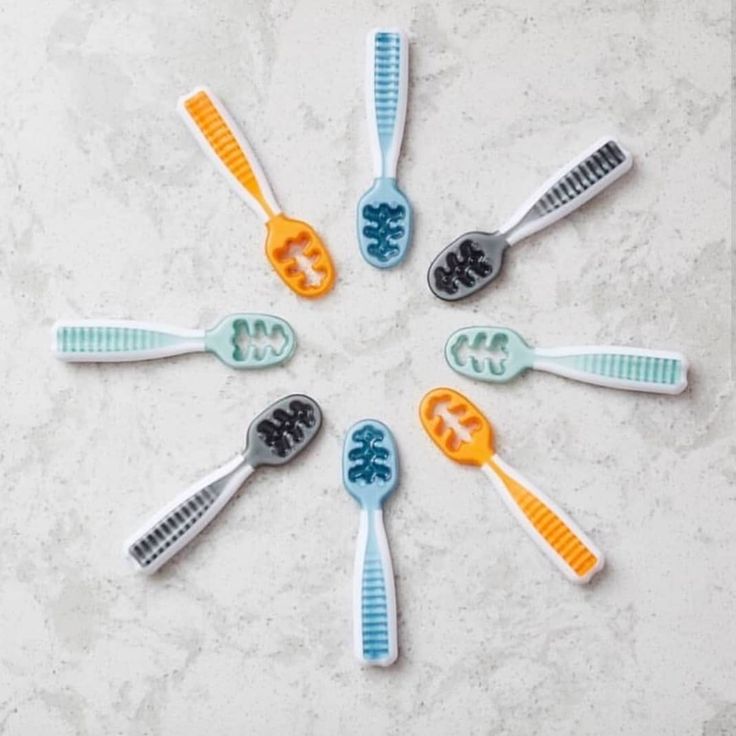 This fully applies to night feedings if you do not plan to save them. Moreover, associations with sleep are usually more persistent, and deviation from them can be taken more seriously. Let dad or grandmother better approach the baby: not smelling your milk, the little one will rather agree to taste the mixture from the bottle. nine0272
This fully applies to night feedings if you do not plan to save them. Moreover, associations with sleep are usually more persistent, and deviation from them can be taken more seriously. Let dad or grandmother better approach the baby: not smelling your milk, the little one will rather agree to taste the mixture from the bottle. nine0272 - To introduce the baby to an unfamiliar taste of the mixture, you can first treat him with a spoon.
- Feeding space is important for some babies. It is quite possible that in an environment that he does not associate with breastfeeding (for example, in another room), he will treat the bottle more favorably.
- If a child stubbornly demands a breast, refusing a bottle, nothing will help you except your own persistence. Cunning. Give him the opportunity to refuse this time, but when he is hungry enough again, he will most likely perceive the "mom's surrogate" less hostile. nine0272
- The child at this moment more than ever needs your kind attitude and affection: he needs to make sure that he is weaned only from the breast, and not from the mother as a whole.
 For example, at night, when your child starts screaming, trying to convince you to give up your own inhibitions, you can rock him in your arms, walk around the room with him and sing a lullaby, even if you usually do not rock him before bed. The stage is considered new because it requires the rejection of the old established rules. You can try to switch your baby's attention to something else: interest him in flashlights visible in the window or headlights of night cars. The main thing is not to let him get hung up on his own negative emotions. nine0272
For example, at night, when your child starts screaming, trying to convince you to give up your own inhibitions, you can rock him in your arms, walk around the room with him and sing a lullaby, even if you usually do not rock him before bed. The stage is considered new because it requires the rejection of the old established rules. You can try to switch your baby's attention to something else: interest him in flashlights visible in the window or headlights of night cars. The main thing is not to let him get hung up on his own negative emotions. nine0272 - Weaning a baby who is breastfed only in the evening and at night does not fundamentally differ from other weaning (see paragraphs 1 and 5), that is, it is better if someone else comes up to the child with a bottle at night. If the baby stubbornly refuses, be persistent, while trying to distract the baby with something (look at the flashlights, etc.).
If your baby is over a year old, there is probably no point in switching him to nighttime formula feedings. If you finally decide to wean him from the chest, then it is better to immediately accustom him and sleep all night without waking up for "snacks". At this age, from the point of view of physiology, night feedings are no longer needed, but rather remain as a habit associated with stereotypes of sleep and falling asleep. If they have at least some sense (psychological) when breastfeeding, then when you refuse breastfeeding, it is advisable to completely wean the baby from them, so he will learn to sleep better at night and eat more actively during the day. nine0003
If you finally decide to wean him from the chest, then it is better to immediately accustom him and sleep all night without waking up for "snacks". At this age, from the point of view of physiology, night feedings are no longer needed, but rather remain as a habit associated with stereotypes of sleep and falling asleep. If they have at least some sense (psychological) when breastfeeding, then when you refuse breastfeeding, it is advisable to completely wean the baby from them, so he will learn to sleep better at night and eat more actively during the day. nine0003
A few words about mom
When you wean a baby, your own body also needs time to adjust and stop producing milk. It is almost impossible to predict how this period will pass for you. There is some dependence: the less problems the mother had at the time of the start of breastfeeding, that is, the better her individual physiological mechanisms are “debugged”, the easier this process will be reversed.
If you stop at gradual weaning, your mammary glands will also gradually get used to the reduced "load" and begin to slow down the process of milk production. The chest will be tense at first. Try to find a middle ground: on the one hand, an increase in pressure in the terminal sections of the glands most effectively inhibits the further production of milk, on the other hand, it is also not worth bringing the matter to serious engorgement. Pump little by little to relieve yourself of severe discomfort, but not completely. If the milk is completely removed, the body will perceive this as a signal for its further production. Some mothers, with tension and soreness of the breast, prefer to give it to the baby. This certainly helps, but keep in mind that in this case you voluntarily choose to "roll back" and the process will have to start over. nine0003
The chest will be tense at first. Try to find a middle ground: on the one hand, an increase in pressure in the terminal sections of the glands most effectively inhibits the further production of milk, on the other hand, it is also not worth bringing the matter to serious engorgement. Pump little by little to relieve yourself of severe discomfort, but not completely. If the milk is completely removed, the body will perceive this as a signal for its further production. Some mothers, with tension and soreness of the breast, prefer to give it to the baby. This certainly helps, but keep in mind that in this case you voluntarily choose to "roll back" and the process will have to start over. nine0003
You can start taking diuretics. It is better if they are "soft": kidney tea or tea for weight loss. Some, especially zealous women, even begin to drink laxatives. It is difficult to say how effective they are in this case, but if you have a lot of milk, in principle you can try. Let them also be “soft”: for example, the same tea for weight loss or all kinds of herbal remedies.
If you take away the baby "at once", your body will be placed in more severe conditions. In this case, you may encounter some problems (does not mean that they are difficult and unsolvable), but the whole process of fading lactation will take much less time. nine0003
Emergency weaning
In this situation, the woman is faced with the question of what to do with milk, where to put it? We have already written that if you want to continue breastfeeding after your recovery, milk can simply be expressed. But if you are not going to return to breastfeeding, then lactation (milk secretion) should be suppressed.
Here are some considerations and recommendations in addition to those already listed:
- Try to maintain a drinking regime similar to the first days after childbirth, that is, drink no more than 500-700 ml of fluids per day, including first meals and juicy fruits. It may seem difficult, but do not worry: it was after giving birth that you were terribly thirsty, now everything will be different.
 nine0272
nine0272 - Attitudes towards breast pulling today are very contradictory. Those who used this recommendation are usually satisfied, but experts consider this procedure to be harmful: sometimes it leads to the development of milk stagnation (lactostasis) and inflammation of the mammary glands (mastitis).
- Your doctor may prescribe a lactation suppressant drug, bromocriptine (also called Parlodel). It stops the production of the anterior pituitary hormone prolactin (this hormone causes milk production), and the mammary glands, thus, lose their “guiding thread”. nine0272
The same recommendations can be used for "planned" weaning.
Be patient and good luck!
When should weaning from the breast?
Do not wean a baby from the breast during difficult periods for him (illness, the beginning of "sitting" with a nanny, potty training) and for you periods (going to work, moving, changing family composition). If you can foresee some event that will cause you to refuse breastfeeding, it is better to wean the little one in advance.



